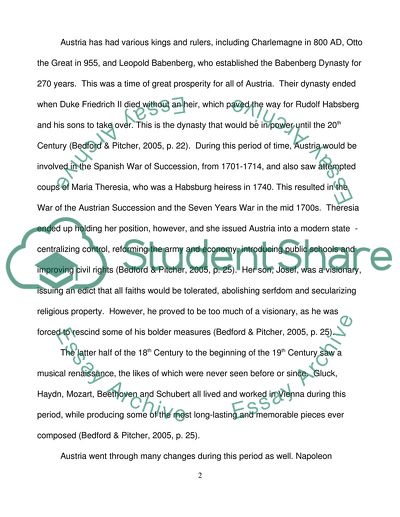Cite this document
(Brief History and Culture of Austria Essay Example | Topics and Well Written Essays - 2500 words, n.d.)
Brief History and Culture of Austria Essay Example | Topics and Well Written Essays - 2500 words. Retrieved from https://studentshare.org/geography/1744809-austria
Brief History and Culture of Austria Essay Example | Topics and Well Written Essays - 2500 words. Retrieved from https://studentshare.org/geography/1744809-austria
(Brief History and Culture of Austria Essay Example | Topics and Well Written Essays - 2500 Words)
Brief History and Culture of Austria Essay Example | Topics and Well Written Essays - 2500 Words. https://studentshare.org/geography/1744809-austria.
Brief History and Culture of Austria Essay Example | Topics and Well Written Essays - 2500 Words. https://studentshare.org/geography/1744809-austria.
“Brief History and Culture of Austria Essay Example | Topics and Well Written Essays - 2500 Words”, n.d. https://studentshare.org/geography/1744809-austria.


